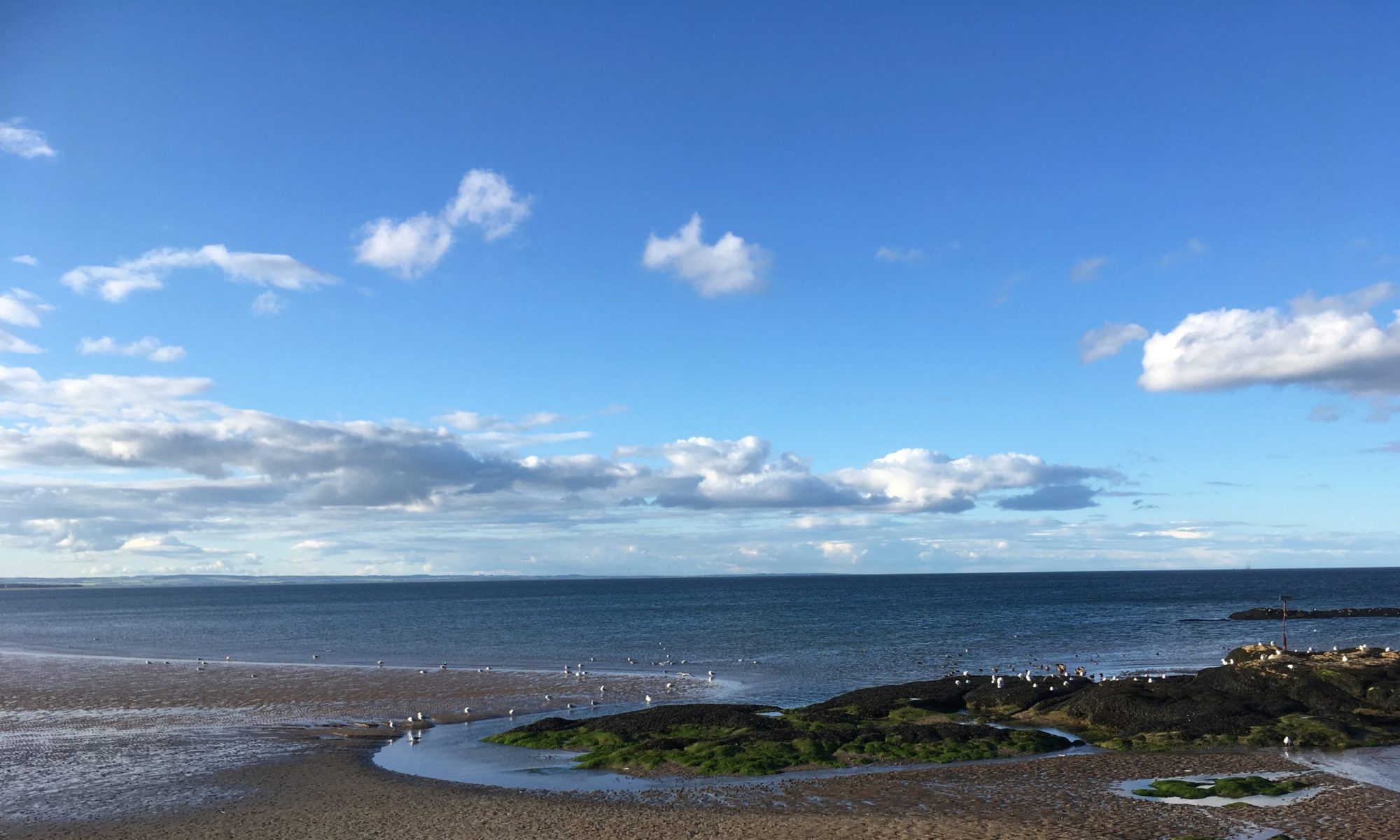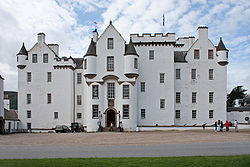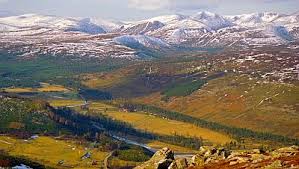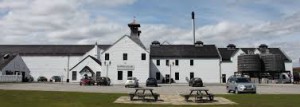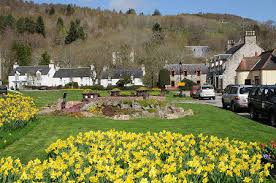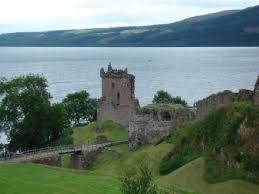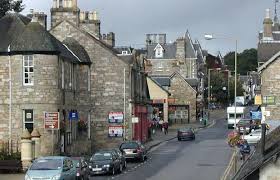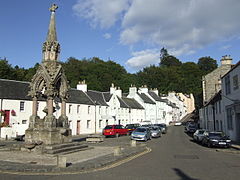Loch Ness Tour Example
This route would take 6hrs 39 mins driving time and comes to 332 miles for the day.This route would take you via Inverness and than to Drumnadrochit and return the same way.
We suggest at least three breaks during the day, one of which for lunch.
1hr 30 mins drive from St Andrews
Blair Castle dates back to 1269, the castle has been transformed through the ages, from its cold medieval beginnings in a strategic position during political struggles to become a fine Georgian mansion and finally a Victorian castle in the barionial style. These influences can still be seen today across the 30 rooms on full display.
The archaeological record and Gaelic place names illuminate the history of the relationship between people and place in the Cairngorms. Place names give an insight into the culture, history and environment of the Park, which have all influenced the Gaelic names used for mountains, woodlands, lochs, rivers and settlements.
There are traces of people who were here 7,000 years ago, and amazingly, you can still see the remains from prehistoric, Celtic and Pictish times.
From the culture of the Celts and the Picts the clan system was born, the way of life in the Cairngorms from the 10th to the 18th centuries. Though many of the castles and townships now lie in ruins you can still hear their stories being told.
The Clan way of life was dismantled after the Jacobie uprising. Military barracks and roads were built, forests were planted, planned towns were created, new industries flourished, and the glens were emptied to make way for sporting estates and sheep. This all-changing event has clearly left its mark.
One of the biggest changes in the Cairngorms came with the railways and the Victorians’ love of the Highlands. Tourism flourished and, keeping up with the Windsors, wealthy visitors built large houses and shooting lodges, changing the landscape once again.
You can feel the history of the place oozing out of every nook and cranny!
The route than takes you through Cairngorm National Park with some breath taking views over the mountain ranges.
Dalwhinnie Whisky Distillery 30 mins drive
You could take a tour at 1.30 pm (there is a last one at 2.45pm)
From here the route continues through the Cairngorm National Park
Drumnadrochit 1hrs 30 mins drive
Loch Ness is the largest and best known of the lochs in the Great Glen that along with the connecting canals make it possible to travel by boat from coast to coast in the Scottish Highlands. Loch Ness stretches from 5 miles outside of Inverness in a south westerly direction alongside the A82 Inverness to Fort William road starting at Lochend passing close by Drumnadrochit where the river Enrick flows out of Glen Urquhart into Loch Ness and washes round Castle Urquhart on its way to Fort Augustus at its southernmost end. The Area around Loch Ness includes the larger villages of Drumnadrochit and Fort Augustus, and the glens, Glen Urquhart and Glen Moriston as well as the the Great Glen which reaches across Scotland from Fort William in the west to Inverness in the east and to the east of Loch Ness there is Dores, Foyers and many small communities.
From Inverness to Drunadrochit the route takes you along Loch Ness
Urquhart Castle 5 mins drive
Ruins of Urquhart castle date back to the 13th century and provide a breath taking view over Loch Ness.
About 2 miles southeast of the village Drumnadrochit and 15 miles south of Inverness, along the A82 road, lie the spectacular ruins of Urquhart Castle on a peninsula surrounded by the breathtaking Loch Ness.
In its 500 years of being a medieval castle, Urquhart has played several important roles and been a popular recurring feature in and of Scottish history. In particular, the castle faced a considerable amount of action and bloodshed during the 13th to 17th centuries. It was seized by the English after Edward I’s invasion, reclaimed and seized again, was under the control of Robert the Bruce, King of Scots in the 14th century and was repeatedly attacked during the 15th and 16th centuries by the MacDonald Lords of the Isles arriving from the West; to recap the very least from its thrilling history.
Having seen the last of its historical turmoil in 1692 where it was largely destroyed in the fight between the Williamite and Jacobite groups, it was gifted in 2003 by the widow of its most recent owner of the time (‘Mr Chewett’) to the National Trust for Scotland
Pitlochry or Dunkeld 2hrs drive
Pitlochry today dates largely from Victorian times, although the areas known as Moulin and Port-na-craig are much older. History records that Moulin Kirk was granted by the Earl of Atholl to Dunfermline Abbey in 1180 and Moulin became a burgh of barony in 1511. Port-na-craig was the site of the original ferry over the River Tummel which operated until the suspension footbridge was built in 1913. Building between these two separate communities followed the construction of the military road north in the 18th century which followed the line of the present main street.
In 1842 Queen Victoria visited Perthshire on one of her grand tours and her favourable opinion of the area caused the town to be more widely noticed. After the railway station was built in 1863, Pitlochry became a favoured destination for tourists.
In 1947 Pitlochry became a burgh. That year also saw the beginning of construction of a dam as part of the Tummel hydro-electric power scheme. The dam and its fish ladder are a popular tourist attraction today
From Urquhart Castle the route takes you back along Loch Ness, through Inverness and through the Cairngorms National Park and a last stop could be Pitlochry or Dunkeld.
Another 1hr 30mins will return you to St Andrews
Birnam and Dunkeld are set on opposite banks of the river Tay in the heart of Perthshire’s Big Tree Country surrounded by hills and beautiful countryside and forests. The two towns of Birnam and Dunkeld were only joined in 1809 with the building of the Dunkeld Bridge by Thomas Telford across the River Tay.
Dunkeld is thought to date back to the sixth century when a monastery was founded beside the River Tay. Kenneth MacAlpin, the first King of Scotland, moved the bones of St Columba to Dunkeld around the middle of the 9th century, which established Dunkeld as the first ecclesiastical capital of medieval Scotland . Building of the present day Dunkeld Cathedral began in the 12th century and additions were added up to the 16th.
Another route could be From St Andrews along the river Tay past Perth, Dunkeld, Pitlochry (Blair Castle) to
Fort Augustus, Drumnadrochit, Inverness and through the Cairngorms National Park back.
This route would take 7hrs 10 mins driving times and is also 332 miles
It all very much depends what you would like to see. Whether you enjoy walking through nature or villages, like visiting castles or distilleries or get to know the locals while enjoying a great meal. If you let us know what you enjoy we can provide you with many more suggestions.
Please feel free to use the link below to submit an inquiry or call 0044 7446112672 to discuss your requirements
